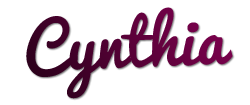Whether you are homeschooling your child or just looking for some fun (and cheap) activities for the summer break, you can't beat shopping at Dollar Tree! Whenever I shop anywhere, I'm always looking and thinking of fun activities I can use the item for, which is not necessarily how it is normally used. Keep reading for ways to cover literacy, math, science, social studies, and much more!
#1 - Mini Dust Pan and Brush
This makes a fun game to play at home or on a road trip! Write uppercase or lowercase letters, numbers, cvc words, sight words, etc. on small pieces of paper. Let your child throw the cards up in the air to scatter all over the floor. Call out something for your child to sweep into the pan. This is a fun and simple game that will have your child learning and practicing important concepts while "sweeping up"!
#2 - United States Wall Map
All children need to learn about geography, map skills, and the states. Place this on a wall. Use a pushpin or highlighter to mark the places you travel this summer. Keep it up all year to continue using as your child learns about important landmarks, capitals, etc.
#3 - Clothespins
Using clothespins to clip items helps your child develop fine motor skills. Use clothespins to pick up pom-poms or other small items. Call out a number, and have your child use a clothespin to pick up and count out that many objects.
#4 - Patriotic Table Scatter
There are so many great educational activities to do with these. Sort by colors. Sort the stars by large or small. Count the red items, white items, or blue items. Count the stars. Compare which color has more and which has less. Are there more large stars or small stars? Start patterns and have your child finish each pattern. Use the clothespins you purchase to pick up the items. After you've completed a LOT of math activities using this one simple product, glue the pieces on construction paper for arts and crafts. Make a Happy 4th of July card, make a poster to carry to a parade, or make place cards with names for a get-together or with the names of foods. Use your imagination. This one activity can keep your child busy for a LONG time!
#5 - Cyclone Fever Twirly Toy
My grandson has had SO much fun with this one. The heat index has been CRAZY, so he's played with it inside. Again, this one is great for math activities. Predict which color will fly the highest or the most distance. Measure to check. It's a great science lesson for force and motion also!
#6 - Straws
Sort the straws by color and count them. Cut the straws into different lengths, and put them in order from shortest to longest or longest to shortest. Make patterns. Use the straws to make shapes. Add large marshmallows to build 3-D shapes. Use the straws for non-standard measurement of the distance of the twirly toy (10 yellow straws or 20 blue straws). Use the straws as counters for adding or subtracting. Of course, use them for drinking deliciously cold slushy drinks!
#7 - Bug Catcher
Not only will your child love scooping up and catching insects, but there are other uses, as well! Use these with items in a container of water. Catch small objects as they are floating by. Pick up pom-poms, or scoop up rice. This is another fun way to develop fine motor control.
#8 - Pick up Pairs Card Game
These cards are great for developing your child's vocabulary. Discuss the types of habitats of the different animals. Discuss different kinds of skin coverings. Sort the animals by their skin, where they live, or number or legs, or classify as mammals, birds, amphibians. One of our favorite games is to turn them all over and play a game of classic memory.
#9 - Cookie Sheet
Not only is a cookie sheet magnetic, but it's the perfect size to hold in a lap when traveling this summer. Use it to hold items for playing so that they stay contained. Use it to keep crayons from rolling off. It's also perfect as a "desk" for books and coloring books. It can even be used for a food tray!
#10 - Puzzles
Puzzles are a lost gem in today's world of technology. When I taught kindergarten, we used a lot of puzzles in the classroom. This is another activity that is perfect for developing fine motor skills. Puzzles also help build logic, reasoning, and cognitive skills. We love to put small magnets on the back of each puzzle piece, pop them into a Ziploc baggie with the front of the box for reference, and take them along on a road trip (or even just a trip to town). Use the puzzle with the cookie sheet to make for an easy and fun activity that really sticks!
(Please note this blog post has an affiliate link for the magnets. This means that if you purchase using the link, I receive a very small commission that helps me with the upkeep of my website. However, this doesn't add to the price of the item for you.)
Do you love Dollar Tree as much as I do? It's a frugal and effective way to have fun learning at home. Don't miss out next month when I give you ten more ideas to purchase for July.
Fun and frugal learning is just...
My Kind of Teaching!!!



.png)


.png)
.png)

.png)







.png)
.png)






























